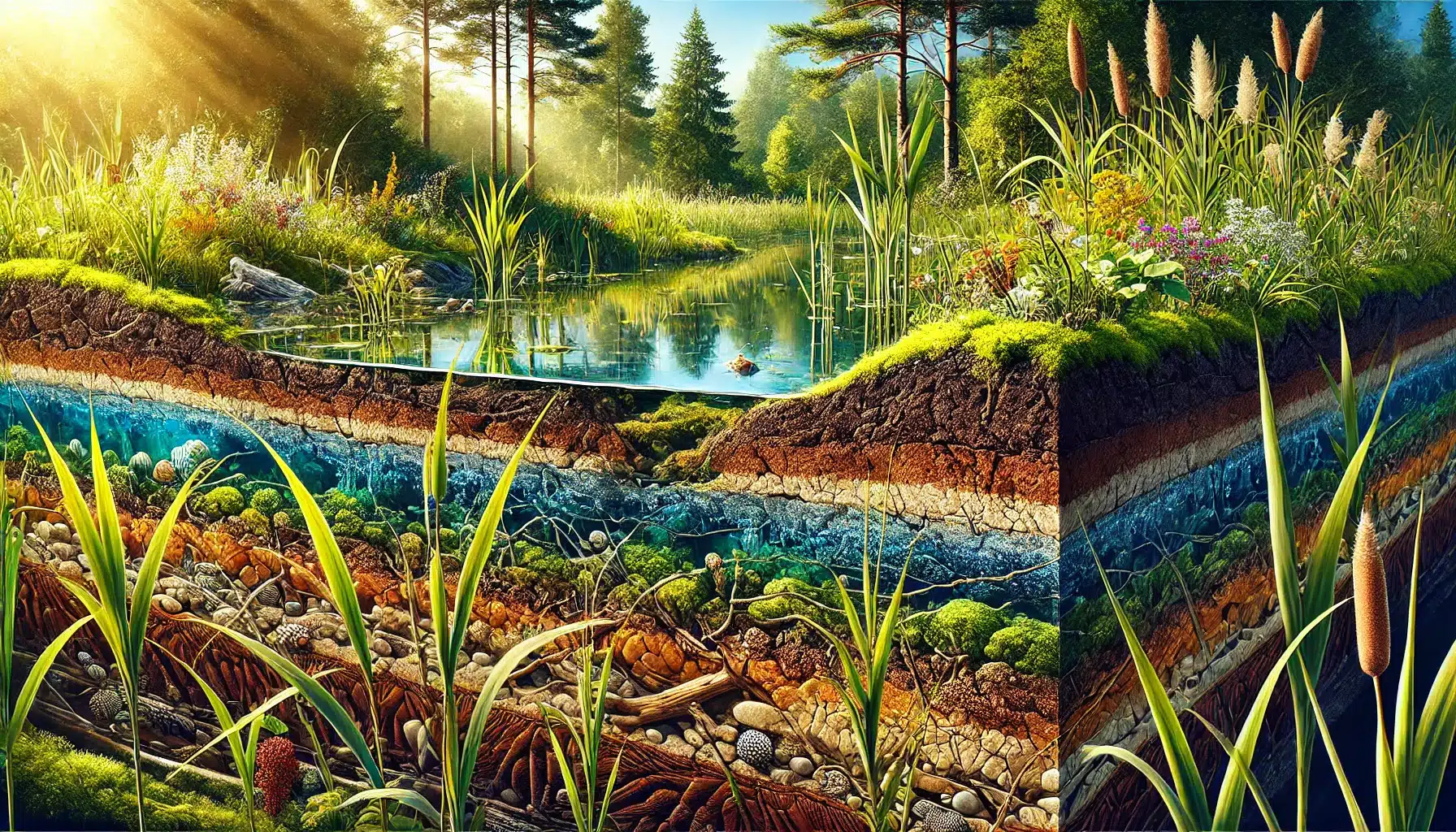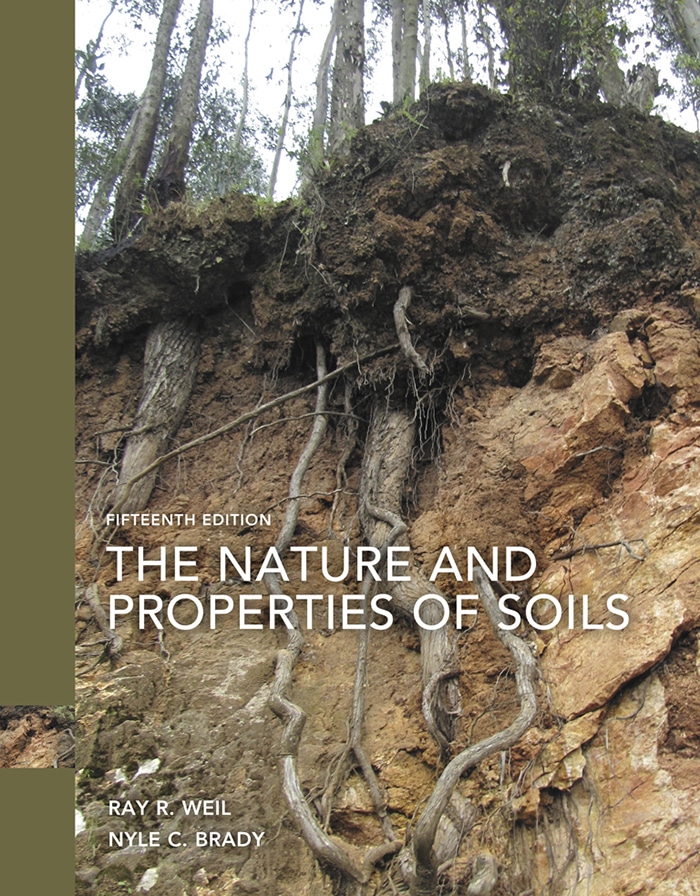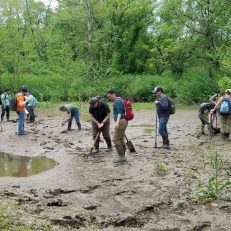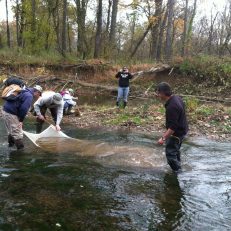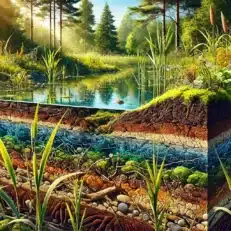Product Description
Course Objectives: Understanding Soil Characteristics
- Understand Soil Genesis and Morphology:
- Comprehend the processes of soil formation, particularly in wetland environments.
- Identify and describe soil horizons and their significance in wetland ecosystems.
- Recognize the factors influencing soil genesis and morphology in various wetland contexts.
- Recognize the relationship between hydric soils and hydrophytic vegetation.
- Classify and Analyze Soils:
- Gain proficiency in using soil classification systems, with a focus on wetland soils.
- Develop skills to analyze and interpret soil profiles through theoretical study and classroom discussions.
- Apply soil classification methods to hypothetical wetland scenarios.
- Learn to classify soils, including hydric soils, based on specific criteria such as the presence of histosols, aquic moisture regimes, and flooding or ponding durations during the growing season.
- Explore Soil Chemistry:
- Understand the chemical properties of wetland soils, including soil pH, cation exchange capacity, and nutrient availability.
- Learn how these chemical properties affect plant growth and ecosystem health in wetland environments.
- Develop strategies to optimize soil conditions for sustainable wetland management based on theoretical models.
- Investigate Soil Biology:
- Explore the biological components of wetland soils, including the role of microorganisms and soil fauna.
- Understand the interactions between biological organisms and soil health through case studies and literature reviews.
- Apply knowledge of soil biology to enhance wetland conservation and restoration efforts in theoretical contexts.
- Apply Soil Science to Environmental Challenges:
- Integrate knowledge of soil science to address contemporary challenges in wetland conservation, land management, and environmental regulation.
- Use case studies and real-world examples to apply theoretical knowledge to practical situations.
- Develop solutions for optimizing soil conditions and maintaining wetland ecosystem health based on classroom discussions and analysis.
- Develop Professional Expertise:
- Equip students with the skills and knowledge necessary for careers in environmental consultancy, wetland ecology, and natural resource management.
- Enhance critical thinking and problem-solving abilities related to wetland soil science.
- Foster a commitment to sustainable land and wetland management practices through in-depth theoretical understanding and classroom engagement.
These objectives aim to provide students with a comprehensive understanding of wetland soil science, enabling them to make informed decisions and contribute to the conservation and management of wetland ecosystems.
Discover the fascinating world beneath your feet with our immersive course based on the acclaimed textbook “The Nature and Properties of Soils” by Ray Weil, with a special focus on wetland ecosystems. Whether you’re a student, professional, or passionate about the environment, this course will captivate your curiosity and expand your understanding of the vital role soils play in wetlands. Journey through the intricate processes that shape wetland soils, learn how to classify and manage them, and gain the skills needed to address contemporary environmental challenges.
Embark on an adventure into soil genesis, morphology, and classification with a wetland twist. Our dynamic lectures and interactive lab sessions will bring the science of wetland soils to life, allowing you to get hands-on experience with soil profiles and classification systems used worldwide. You’ll uncover the secrets of soil formation in wetland environments, explore the unique factors that influence it, and understand the importance of soil horizons in maintaining wetland health. Each session is designed to be engaging, ensuring that you not only learn but also enjoy the process.
But that’s not all – delve into the chemistry and biology of wetland soils to see how they affect plant growth and ecosystem health. Explore the wonders of soil pH, nutrient availability, and the magical interactions between microorganisms and soil fauna that keep our wetland ecosystems thriving. Through captivating case studies and real-world applications, you’ll learn how to optimize soil conditions for sustainable wetland management and conservation. Imagine being able to apply this knowledge to make a real difference in preserving and restoring wetland environments!
By the end of this exciting course, you will have a profound understanding of wetland soil science, powered by the insights from Weil’s “The Nature and Properties of Soils.” The course includes access to the textbook as part of the tuition, ensuring you have all the resources you need at your fingertips. Whether you aim to be an environmental consultant, wetland ecologist, or natural resource manager, this course equips you with the expertise to make impactful decisions. Join us on this thrilling journey and become a steward of the wetlands, ready to tackle the pressing soil-related challenges of our time. Enroll today and let the adventure begin!
Characteristics of Wetland Soils
Wetland soils are a fascinating study in contrasts, marked by their high water content and low oxygen levels. These soils are rich in organic matter, which plays a crucial role in supporting a diverse array of plant species. Unlike upland soils, wetland soils are often saturated, flooded, or ponded for extended periods during the growing season, creating anaerobic conditions that significantly influence their properties.
There are several types of wetland soils, each with unique characteristics. Peat soils, for instance, are composed primarily of partially decayed plant material, while muck soils are more decomposed and have a finer texture. Histosols, another type, are organic soils that form in wet environments and are rich in organic matter. The presence of this organic matter affects the rate of decomposition and nutrient availability, making wetland soils incredibly fertile and vital for wetland ecosystems.
Hydric Soil Formation and Development
Hydric soils are a special category of wetland soils that form under conditions of prolonged saturation. When soil remains saturated for one or two weeks or more during the growing season, it undergoes significant changes. The parent material, which is the original matter from which the soil develops, plays a crucial role in how the soil retains water and its overall characteristics.
In these saturated conditions, soil microorganisms quickly deplete the available oxygen, leading to anaerobic environments. This lack of oxygen changes the soil’s color and appearance, often resulting in a grayish hue. Additionally, the continuous saturation slows down the decomposition of plant matter, leading to the accumulation of thick layers of organic material such as peat or muck. These layers are essential for the formation of hydric soils and contribute to their unique properties.
Identifying and Managing Wetland Soils
Identifying and managing wetland soils is a critical task for soil scientists, who use various methods to classify and understand these unique environments. One of the primary indicators of hydric soils is the presence of organic matter and saturated soil conditions. The National Technical Committee for Hydric Soils (NTCHS) has developed a comprehensive list called “Hydric Soils of the United States” to aid in the identification process.
Soil surveys are another valuable tool for identifying areas where hydric soils are likely to occur. These surveys provide detailed information about soil characteristics, helping scientists and land managers make informed decisions. Managing wetland soils requires a deep understanding of their unique properties and the potential impacts of human activities. Effective management strategies must consider the delicate balance of wetland ecosystems, aiming to preserve their health and functionality while accommodating necessary land use.
By understanding the characteristics, formation, and management of wetland soils, we can better appreciate their importance and work towards their conservation. This knowledge is essential for anyone involved in environmental consultancy, wetland ecology, or natural resource management, providing the tools needed to protect these vital ecosystems.

